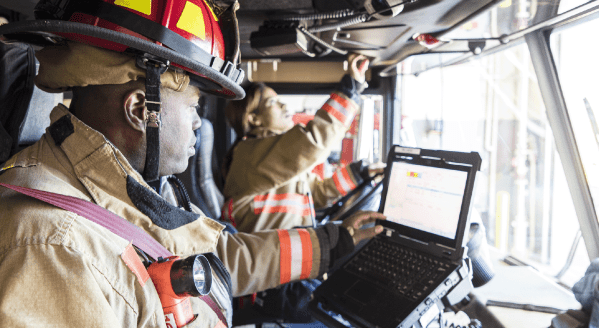White House officially unveils disaster data portal

The new disaster.data.gov portfolio, which displays where disasters have been declared around the country. (Credit: disaster.data.gov)
More than two years after Hurricane Sandy battered the East Coast, the White House’s Office of Science and Technology Policy officially launched a portal to aggregate open disaster-related data from across the country.
Launched on disasters.data.gov, the featured data is designed to act as a public resource for those impacted by disasters, and help government and the private sector respond to crises as quickly as possible.
The portal was announced in an OSTP
blog post jointly written by the White House’s Brian Forde, the National Security Council’s Heather King and the Homeland Security Department’s Meredith Lee.

Users can download several separate data sets from various agencies on the portal. (Credit: disaster.data.gov)
“Strengthening our nation’s resilience to disasters is a shared responsibility, with all community members contributing their unique skills and perspectives,” the post said. “Whether you’re a data steward who can unlock information and foster a culture of open data, an innovator who can help address disaster preparedness challenges, or a volunteer ready to join the ‘Innovation for Disasters’ movement, we are excited for you to visit the new disasters.data.gov site launching today.”
Although the site launched Monday, it was first announced at the White House’s Innovation for Disaster Response and Recovery Initiative Demo Day
in July. The Demo Day was a part of the Disaster Response and Recovery Initiative effort out of the White House. The effort was inspired by the impact of Hurricane Sandy on the East Coast. Now, the site contains several data sets for several different types of disasters.
“[The portal] is designed to be a public resource to foster collaboration and the continual improvement of disaster-related open data, free tools and new ways to empower first responders, survivors and government officials with the information needed in the wake of a disaster,” the post said.
Through a series of several landing pages, the data portal allows a user to examine data by type of disaster, including earthquakes, floods, hurricanes, severe winter weather, tornadoes and wildfires. According to the blog post, more categories will be added in the future.

In addition to numerous data sets, the portal also provides access to third-party apps from the private sector. (Credit: disaster.data.gov)
Also included in the portal is a series of apps and tools that municipal communities can deploy at minimal cost to first responders, survivors or volunteer organizers before, during or after a disaster strikes. Some of the tools and apps were unveiled at the July Demo Day, and, according to the post, more will be added in the future.
But as a whole, the post said, the disaster data page is centered on opening data that was traditionally closed to the public to improve preparedness, response and recovery.
“Datasets relevant to disaster preparedness — including prevention, protection, mitigation, response and recovery — have traditionally been closed by default to the public,” the post said. “To help empower the community with information that can improve community resilience, the administration is working with stakeholders to open a series of disaster-related datasets from all levels of government and the private sector.”
Alongside the data portal, the administration also revealed the first in a series of “Innovator Challenges” to highlight pressing needs from the disaster preparedness community, according to the blog post.
The
challenge will focus on how to use open data, real-time sensors, social media and other tools to help reduce the number of fatalities from flooding.
OSTP declined to provide additional information on the new data portal.





